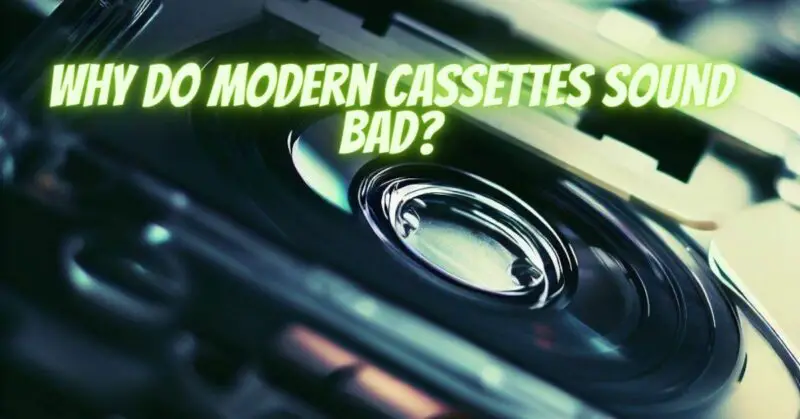In recent years, there has been a resurgence of interest in analog audio formats, including the humble cassette tape. While cassette tapes offer a nostalgic charm and a tangible connection to the past, audiophiles and music enthusiasts often wonder why modern cassettes don’t always live up to the audio quality standards of their predecessors. In this article, we’ll explore the factors contributing to the perceived lower audio quality of modern cassette tapes and why this format may not always meet the expectations of discerning listeners.
The Nostalgic Appeal of Cassette Tapes
Cassette tapes hold a special place in the hearts of many, thanks to their history as a portable and accessible music format. They were the go-to choice for personal music collections and mixtapes during the 1970s, 1980s, and 1990s. Today, cassette tapes continue to captivate collectors and enthusiasts looking for a vintage audio experience.
Factors Contributing to Lower Audio Quality
Several factors contribute to the perception that modern cassette tapes may not sound as good as their predecessors:
- Manufacturing Quality: The quality of modern cassette tapes can vary significantly depending on the manufacturer. Many cassette tapes produced today are made with cost-effective materials, resulting in lower build quality and potentially inferior sound reproduction.
- Tape Stock: The type and quality of magnetic tape stock used in modern cassettes can affect audio fidelity. High-quality tape stock is essential for clear, high-fidelity audio, but not all modern cassette manufacturers prioritize this.
- Cassette Deck Quality: The cassette deck or player used to play modern cassettes plays a crucial role in audio quality. Cheap or poorly maintained cassette decks can introduce noise, distortion, and playback issues.
- Mastering and Duplication: The quality of the original audio source, the mastering process, and the duplication method all impact the final sound of a cassette. Inferior mastering or duplication processes can result in a lower-quality product.
- Durability and Storage: Cassette tapes, both vintage and modern, are susceptible to wear and damage over time. Improper storage or handling can lead to issues such as warping, stretching, or magnetic tape degradation, which affect audio quality.
- Noise and Hiss: Cassette tapes are known for their inherent noise, including background hiss. Modern listeners accustomed to digital audio formats may find this noise more pronounced and distracting.
Preserving Audio Quality
While modern cassette tapes may not always match the audio quality of vintage tapes, there are steps you can take to enhance your listening experience:
- Invest in High-Quality Tapes: Seek out reputable manufacturers that prioritize tape quality and use premium materials.
- Maintain Your Cassette Deck: Regularly clean and service your cassette player to ensure it is in optimal condition for playback.
- Choose Good Source Material: Start with high-quality audio sources, such as original recordings or well-mastered digital transfers, to create your own cassette tapes.
- Handle with Care: Properly store and handle your cassette tapes to prevent physical damage and minimize wear.
- Embrace the Nostalgia: Recognize that part of the charm of cassette tapes lies in their analog imperfections, which contribute to their unique character.
Modern cassette tapes may not always match the audio quality standards of their predecessors, but they offer a nostalgic and tactile music experience that resonates with many enthusiasts. By understanding the factors that influence audio quality and taking steps to enhance your cassette listening experience, you can enjoy the unique charm of this enduring analog format. Ultimately, the perceived “bad” sound quality of modern cassettes is often a matter of personal preference and the specific circumstances in which they are enjoyed.


